S.F. Brownrigg’s regional horrors
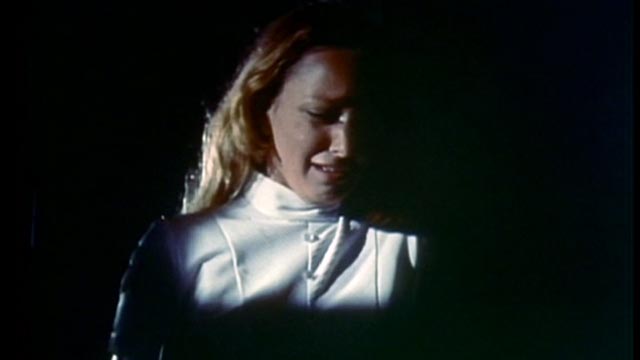
I’ve mentioned here before that I have an affection for low-budget regional filmmakers who make the most of very limited resources, often opting to work in commercially viable genres (horror for the most part) where ingenuity and imagination can overcome material limitations. Of course, many (a majority?) of these filmmakers also lack talent – a drawback which may be overcome to a degree by enthusiasm; but others qualify as genuine auteurs, directors whose impoverished work exhibits a serious attention to theme, character, atmosphere …
Texan S.F. (Sherald) Brownrigg belongs in this class thanks to a genuinely pessimistic worldview and a talented stock company of actors who bring nuance to their off-beat characters. There are some similarities between Brownrigg and Frederick R. Friedel, who was working in North Carolina around the same time. Both filmmakers placed strong female characters at the centre of their narratives, but while Friedel’s women find some kind of empowerment, Brownrigg’s are defeated by the destructive forces which surround them – in fact, they end up plunged into madness by events which they have been unable to control.
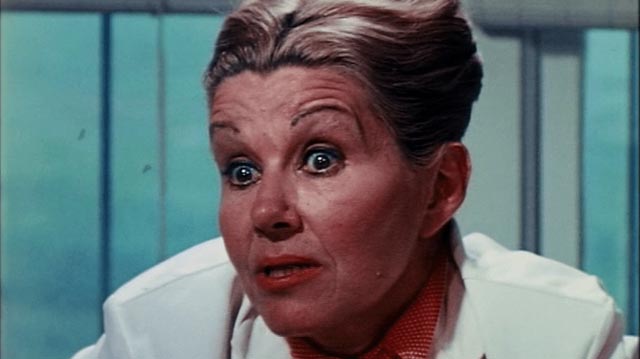
Having been an army cameraman and later a soundman for schlockmeister Larry Buchanan, a fellow Texan, Brownrigg directed his first feature in 1972. Tim Pope’s script for Don’t Look in the Basement (aka The Forgotten) has echoes of Sam Fuller’s Shock Corridor, set as it is in a sanatorium populated by archetypes who reflect a disordered society. This institution is run by Dr. Stephens (Michael Harvey), who has radical theories and a disdain for the traditional doctor-patient power relationship. Whether or not it was conscious, there are echoes of R.D. Laing’s controversial approach to schizophrenia which held sway in Britain in the 1960s: Laing believed that schizophrenia was not madness but actually a rational response to the patient’s disordered social reality.
Dr. Stephens believes in pushing the sanatorium’s residents deeper into their madness so that they can somehow emerge from it whole again. The patients are unrestrained, living without separation from the small staff. The movie opens with a couple of unfortunate consequences of this approach; while on her rounds, Nurse Jane St. Clair (Jessie Lee Fulton) is threatened by one of the patients and finally cracks from the strain of working at the sanatorium. She heads out into the garden where Stephens is encouraging patient Judge Oliver W. Cameron (Gene Ross) to work out his issues by hacking at a log with an axe. Distracted momentarily by Jane, the doctor looks away and the Judge whacks him in the neck with the axe.
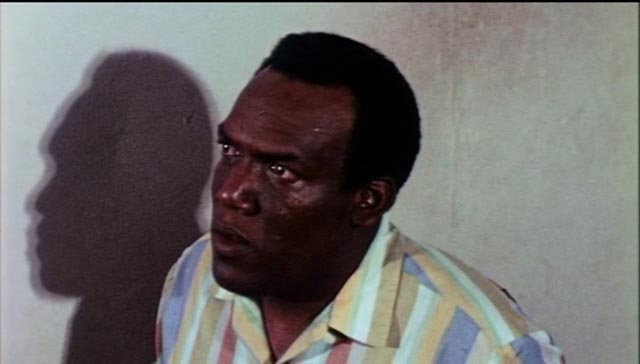
Jane runs back into the house as Dr. Geraldine Masters (Anne MacAdams) takes charge, giving instructions to hulking, lobotomized Sam (William McGhee) on how to deal with the body. (Things don’t end well for the Nurse as she packs to leave.)
The next day, Nurse Charlotte Beale (Rosie Holotik) arrives, having been promised a job by Dr. Stephens. Dr. Masters is hostile and tries to send her away, but finally relents and Charlotte begins duties which become increasingly confusing. Drugs are stolen from a cabinet, the phone is cut off, and the patients’ various disorders become overwhelming. A phone repairman arrives and ends up dead; elderly patient Mrs. Callingham (Rhea MacAdams) is found one morning with her tongue cut out – significantly, the old woman had been warning Charlotte to get the heck out of there.
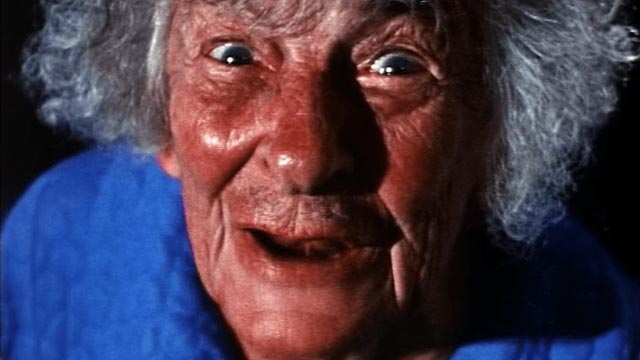
As in Shock Corridor, the inmates have taken over the asylum and the only viable response for the sane interloper is to become mad herself. But unlike Fuller’s film, in which reporter Johnny Barrett is absorbed into the institution, here Charlotte is led to freedom by Sam, shown a secret exit into the rainy night before he goes back inside to “liberate” the other inmates with an axe.
Sam, by the way, is the only patient who has been surgically altered, a lobotomy rendering him childlike and unthreatening; perhaps not coincidentally, he is also the movie’s only Black character. Although no particular emphasis is placed on this, it suggests a disturbing subtext – the doctor believes in allowing his patients free reign to act out their individual derangements, yet he has in Sam’s case used surgery to neuter him.
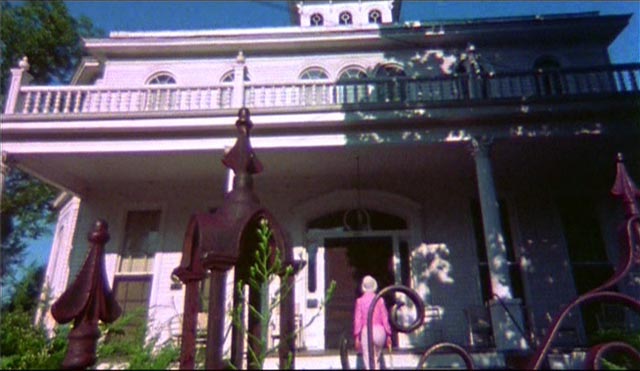
Don’t Look in the Basement is a bleak, claustrophobic movie which posits a society rife with dangerous obsessions which can only find their ultimate expression through violence. In some ways, Brownrigg’s later film Don’t Open the Door (1974) is more conventional, a Southern Gothic mystery which interestingly seems to have been influenced by the giallo, both visually and structurally. The script by Frank Schaefer and Kerry Newcomb also exhibits the kind of narrative incoherence which marks many gialli, with opaque motivations and dropped threads which give the movie an unsettlingly dreamlike ambience.
As in many gialli, the film opens with a flashback: it’s 1962 and adolescent Amanda Post hears her mother scream in the night. Going to investigate, she finds Mom in her bed with a big knife in her chest and as Amanda screams a man’s hand closes over her mouth – end of prologue. (Stephen Thrower speculates that this scene was added in 1979 for a re-release after the success of Halloween. Perhaps, although there is reference to her mother’s fate later in the film. In favour of the argument is the absence of any credit for the actors playing young Amanda and Mom, although there are credits for a couple of characters not seen in the film – although they show up briefly in a deleted scene on the VCI Blu-ray.)
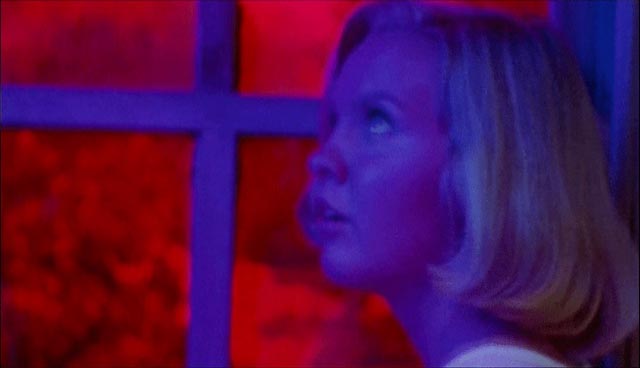
Thirteen years later, Amanda (Susan Bracken) receives an anonymous call telling her that her grandmother is dying and she should come home. She heads back and walks into a situation rife with tension. Her grandmother is confined to bed in the old family mansion, tended by Dr. Crawther (Jim Farrell), who seems to be under the power of Judge Stemple (Gene Ross again), who plans to claim the house for himself when the old lady dies. Also on hand is Claude Kearn (Larry O’Dwyer), the man who runs the town museum and who has already squirrelled away a lot of the house’s contents.
Amanda kicks all three men out of the house when they resist her demand to have Granny (Rhea MacAdams again) admitted to hospital. She calls her estranged boyfriend Nick (Hugh Feagin, one of the patients in the previous movie), a doctor, asking him to come and take care of her grandmother. He does, and the old woman is taken to hospital, triggering anger and resentment among the men who have been hovering like vultures.
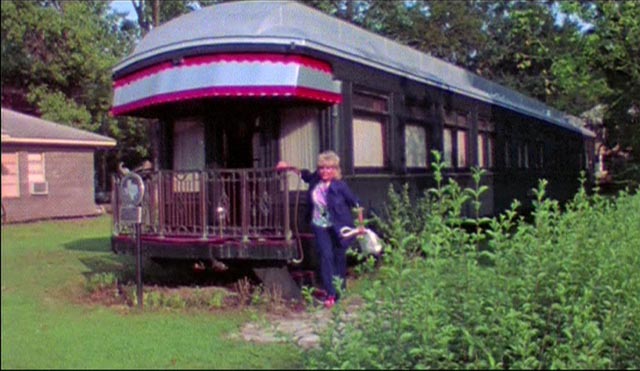
And soon Amanda is being plagued by obscene phone calls, which appear to be coming – yes – from inside the house; the caller, who urges her to touch herself and make sexual sounds, indicates that he can see what she’s doing … and too soon for genuine dramatic impact, his identity is revealed.
Amanda gradually succumbs to the stress, her grip on sanity slipping. The caller closes in and becomes violent and by the end the house is littered with bodies and Amanda is quite mad.
The underlying motives of the men who had seemed to be slowly murdering the grandmother never quite come into focus, but the character of the phantom caller, who ties in with the prologue and the mother’s murder, is a classic giallo figure, someone whose sexual obsession leads to murder.
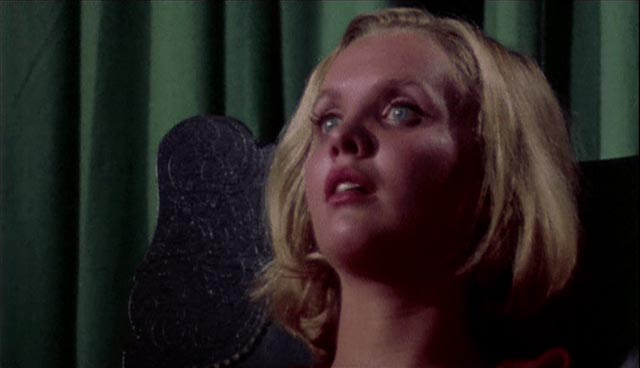
Although, like its predecessor, Don’t Open the Door obviously had a tiny budget, Brownrigg makes very good use of limited locations – the shadowy mansion with its winding staircase and startling attic room with stained glass windows (which provides some vivid, Bava-inspired stylized colour); the judge’s home in an old rail car set in the middle of a lawn; and the museum with its mannequins and dolls – and, once again, his cast gives interesting performances.
Both films, although they superficially look like standard drive-in movies, go against the grain to some degree with their refusal to provide certain typical elements – in particular, despite the fates of their principal female characters, they refuse to victimize and exploit these women for cheap sexual thrills; and there’s nothing cathartic about their climactic violence. Instead of release, their conclusions evoke despair; in fact both films have a sombre tone which precludes the kind of exploitative “fun” typical of cheap drive-in thrillers, while Brownrigg’s visual style and creation of an oppressive atmosphere – in addition to the commitment of his casts – give them both a more serious tone than a viewer might expect.
*
Not surprisingly, given the low budgets and age of the films, both look fairly rough on VCI’s double-feature Blu-ray. Although the packaging suggests a hi-def polish (Basement has a “new 1080P restoration”, while Door has a “new 2K restoration”), there are problems with both transfers. Don’t Look in the Basement appears to have been digitally manipulated, with colours thick and waxy, while Don’t Open the Door gets progressively worse as it goes on, with contrast apparently pushed to an extreme where dark scenes look almost solarized. While it’s good to have both films available, one wishes that VCI had taken the same care in the transfers and mastering as Severin did with Friedel’s Axe and Kidnapped Coed.
There are trailers for both movies, plus a commentary on Basement by David Del Valle and David DeCoteau, and a deleted scene from Door.
*
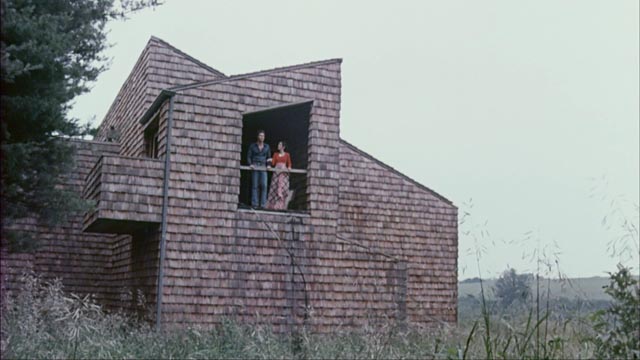
And speaking of low-budget regional filmmaking, I’ve also just seen the first movie John Grissmer was involved with. He co-wrote and produced The Bride in 1973, four years before writing and directing Scalpel. It’s an odd work which doesn’t conform to viewer expectations. The long, idyllic title sequence follows a pair of lovers as they wander hand-in-hand across a sweeping, flowery meadow to the strains of a sappy song, eventually making their way to a strange looking house perched on a wooded hillside.
This house has been built by the woman, Barbara (Robin Strasser), as a project (funded by her wealthy father) intended to give some meaning to her apparently empty life. The man she’s with, David (Arthur Roberts), works for her father and she’s in love with him and intends to marry him. He’s reluctant to approach her father about this because the old man, he says, doesn’t like him and only keeps him on at the company because he’s a profitable employee. What we can clearly see – but Barbara is oblivious of – is that there’s something shifty about him and the feelings he expresses for her seem pretty fake.
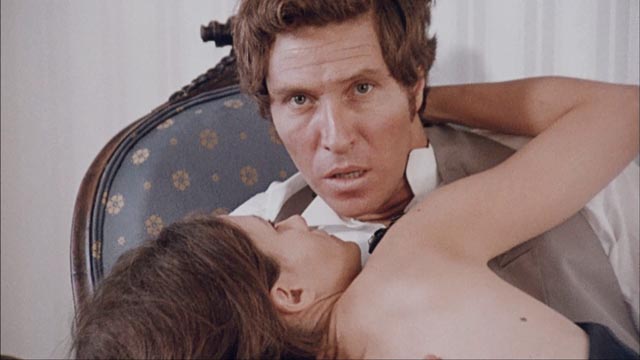
A spoiled daughter, she manages to pressure her father (John Beal, a busy actor whom I best remember as Dr. Paul Beecher in Paul Landres’ The Vampire [1957]) into agreeing to the marriage, even though he’s open about his dislike of David. Turns out he’s a much better judge of character than his daughter. David sneaks away from the wedding reception to get off with his old girlfriend Ellen (Iva Jean Saraceni). When Barbara finds them together going at it, she attacks David with a pair of scissors and wanders back out to the garden party with blood all down the front of her elegant wedding dress. She jumps in a convertible and takes off.
This is where the story goes off in an odd direction. Dad keeps David (who was merely cut) on at the firm and no one knows where Barbara disappeared to. With his bride gone, David immediately shacks up with Ellen. Then the illicit couple start receiving some mysterious phone calls and someone puts a severed chicken head on their pillow (referring back to a story we’ve heard about Barbara’s childhood). Ellen very quickly cracks and flees, and David, with a little prompting, remembers Barbara’s not-quite-finished house in the country and drives out there to confront her.
Spoiler!
She’s been dead all along, having fled there from the wedding and hanged herself. Dad has had her embalmed and she’s lying in a coffin in her wedding dress. There’s a struggle, David falls … and finds himself dead and bound to Barbara in the house, no doubt for eternity.
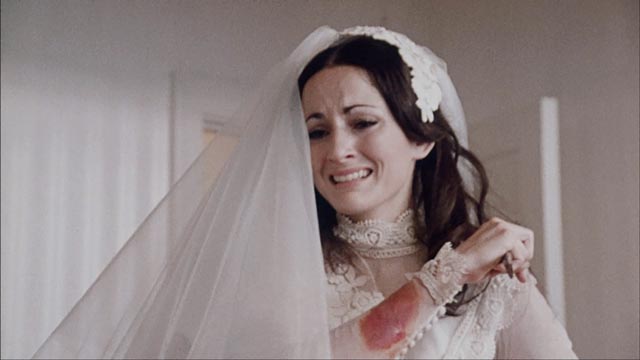
The set-up seems at first fairly standard, with the idea that the wronged woman is out for revenge, stalking the jerk and his girlfriend, making their lives hell. The source of the phone calls and the chicken’s head is unclear in retrospect, unless it was Dad acting in grief on his dead daughter’s behalf. And the abrupt supernatural ending comes out of nowhere. The viewer expects Barbara to be the protagonist, so when she disappears and we get stuck with the unlikable David the narrative becomes difficult to grasp clearly.
These issues with the script, the at-times-awkward performances (particularly Roberts as a very obvious jerk), and pacing which is frequently glacial indicate filmmakers who aren’t entirely sure of what they’re doing. Director Jean-Marie Pélissié (who never made another movie) lacks the confidence Grissmer himself would show a few years later with Scalpel. The Bride (ludicrously retitled, with a clumsily spliced-in card which interrupts the opening theme song, as The Last House on Massacre Street!) doesn’t supply any of the expected visceral thrills of a low-budget drive-in thriller, but its very awkwardness makes it interesting, if not exactly entertaining.
The transfer on Code Red’s Blu-ray is quite watchable, though the print is somewhat battered, with a few jumps and plenty of scratches. It’s paired on the disk with Ruggero Deodato’s notorious The House on the Edge of the Park (1980), which surprised me by being far less outrageous and offensive than its reputation had led me to believe.
Comments
I do see a lot of small regional genre films, especially the horror ones, mostly because of Friday Night Movie night and those multiple movie packs, and yet there always seems to be a few more I still haven’t seen.
I keep hopin’ I’ll find that little gem I’m looking for. Not too many turn up. I believe it’s been made harder to find because the quality of small Indy horror film took a nosedive with the advent of video cameras. Now anyone can do it. And they shouldn’t.
I’ve got one of those 50 Movie Packs that has Indy horror films from the early to mid 2000s and some of those movies are punishment to sit through. I probably deserve it for buying the pack of films.
I’ve actually seen the first two movies you mention. I saw Don’t Look In The Basement back in 2002. I didn’t remember anything about it but my Watched Movie List says I rated it Fair. I gave a so-so to Don’t Open the Door and even though I saw it in 2012 I can’t remember much of anything about it either. That isn’t a slag against the film, my memory is just way weak. Makes watching a movie over a whole new experience.
I just looked and there are watchable copies of both Brownrigg’s movies on YouTube. I looked at both of them briefly and I recall more of Don’t Look In The Basement than Don’t Open The Door, even though I saw it more recently.
I just opened the door to find Amazon with a couple of DVDs. OSS 117 Cairo Nest Of Spies and a single disc with The Blob and Son of Blob on it. The later is a British DVD from the Umbrella Entertainment. Oddly, The Blob has a pair of commentaries. I might watch it later, once I get back from getting supplies and lunch. I
I know what you mean. Things declined pretty fast in the 1980s when people started making camcorder movies. They looked pretty bad and videotape didn’t require as much precision and thought as film, so an awful lot of them were just really sloppily made.
If you haven’t seen it, I highly recommend one of my absolute favourite low-budget regional horror movies, Richard Blackburn’s Lemora: A Child’s Tale of the Supernatural (1973), aka Lemora, The Lady Dracula, aka The Legendary Curse of Lemora. Although it’s less well known, I rank it up there with Carnival of Souls.
I saw Lemora back in 2006 and while I didn’t think of it as highly as you might I gave it an OK in my blog. Thanks to your mention I did find out that I hadn’t added it to my Watched Movie List. I occasionally find I didn’t write down a movie I’d seen, now I’ve added it and corrected a couple of spelling errors. It’s always in need of updating.
I noted that I enjoyed the commentary on the Synapse disc. Blackburn talks about the Lovecraft influence and I could see that, though there’s too much straight up in your face sexuality. Not something I remember in Lovecraft from the 3 or 4 books I read as a 20 something.
Carnival Of Souls I never warmed up to, even after seeing it 4 or 5 times.
Your remark about Lovecraft and sex made me laugh … a lot of the horror in his stories seems to me to be an expression of a sublimated fear of sex.